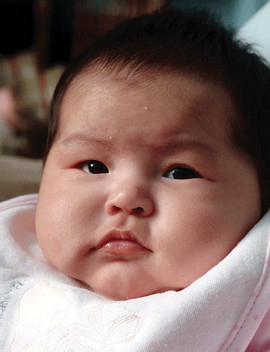Unique NICHD Collaboration Aims to Reduce Infant Mortality in American Indian/Alaska Native (AI/AN) Communities

November marks the 37th annual National Native American Heritage Month to honor AI/AN culture, heritage, and communities. This year’s theme is “Guiding Our Destiny with Heritage and Traditions.”
With its motto, “Honor the Past, Learn for the Future,” the Healthy Native Babies Project—a collaboration between the NICHD and representatives from five AI/AN communities in the U.S. Northern Tier and other organizations that serve these areas—complements this year’s theme quite nicely. This innovative collaboration is part of the Safe to Sleep® Campaign (formerly the Back to Sleep campaign) and aims to spread safe sleep messages within AI/AN communities.
Despite great advances in reducing Sudden Infant Death Syndrome (SIDS) deaths—both overall and within specific racial/ethnic groups in the United States—SIDS rates among AI/AN infants remain the highest of any racial/ethnic group in the United States. Within AI/AN communities, rates within 5 regions of the U.S. Northern Tier—Aberdeen, Alaska, Billings, Bemidji, and Portland—are the highest of all. In addition, AI/AN infants are nearly three times more likely to die of SIDS than are white infants.
To address these statistics and other issues related to infant mortality, the NICHD met with representatives from the Indian Health Service (IHS), from other federal and local governments, and from the 5 IHS regions in the Northern Tier to discuss ways of sharing safe sleep messages with Native audiences.
In 2002, the Aberdeen Area Infant Mortality Study of Northern Plains Indians, funded by the NICHD, the Centers for Disease Control and Prevention, and the IHS, identified important risk and protective factors for SIDS among this group of American Indians. Furthermore, the study confirmed that the risk of infant death from SIDS was especially high among Tribes in the Northern Tier areas.
The study reinforced the need for innovative strategies to reach Native communities with important information about SIDS and ways to reduce its risks, while preserving cultural traditions. At a follow-up meeting hosted by the NICHD in 2003, participants established the Healthy Native Babies Project Workgroup to help create and evaluate messages, materials, and outreach strategies specific to AI/AN audiences.
Over the next several years, the NICHD and Workgroup members continued their efforts collaboratively, with the Workgroup providing vital information about the communities that can only be gathered through personal experiences within those communities. The result of this unique collaboration is a set of culturally relevant and adaptable messages about how to reduce the risk for SIDS and other sleep-related causes of infant death in these communities, along with strategies for disseminating these messages to even hard-to-reach groups.
The Healthy Native Babies Project materials are now available to anyone working in Native communities. These items include:
- Healthy Native Babies Project Workbook Packet, which includes a CDROM that enables users to create custom outreach materials using images and language specific to certain Tribes in the U.S. Northern Tier
- Honor the Past, Learn for the Future Flyer
- Healthy Native Babies Project Facilitator’s Packet, designed for step-by-step preparation to teach classes in reducing the risk for SIDS
In addition, Healthy Native Babies Project leaders are working together to create video demonstrations of some of the training activities, as well as webinars that can provide additional training from a remote location.
The Healthy Native Babies Project is unlike any other project undertaken by the NICHD and the NICHD-led Safe to Sleep® campaign. Because of its success, the Healthy Native Babies Project has become a useful model for collaboration—effective collaboration—that can make a difference in the health of communities.
To learn more about the Healthy Native Babies Project and National Native American Heritage Month, choose one of the links below.
- Native American Heritage Month 2013
- NICHD Resources
- Safe to Sleep® Campaign Website
- Recent NICHD Spotlights on SIDS and Other Sleep-Related Causes of Infant Death:
- Related A-Z Topics:
- NICHD news release related to SIDS
Originally Posted: November 19, 2013

 BACK TO TOP
BACK TO TOP